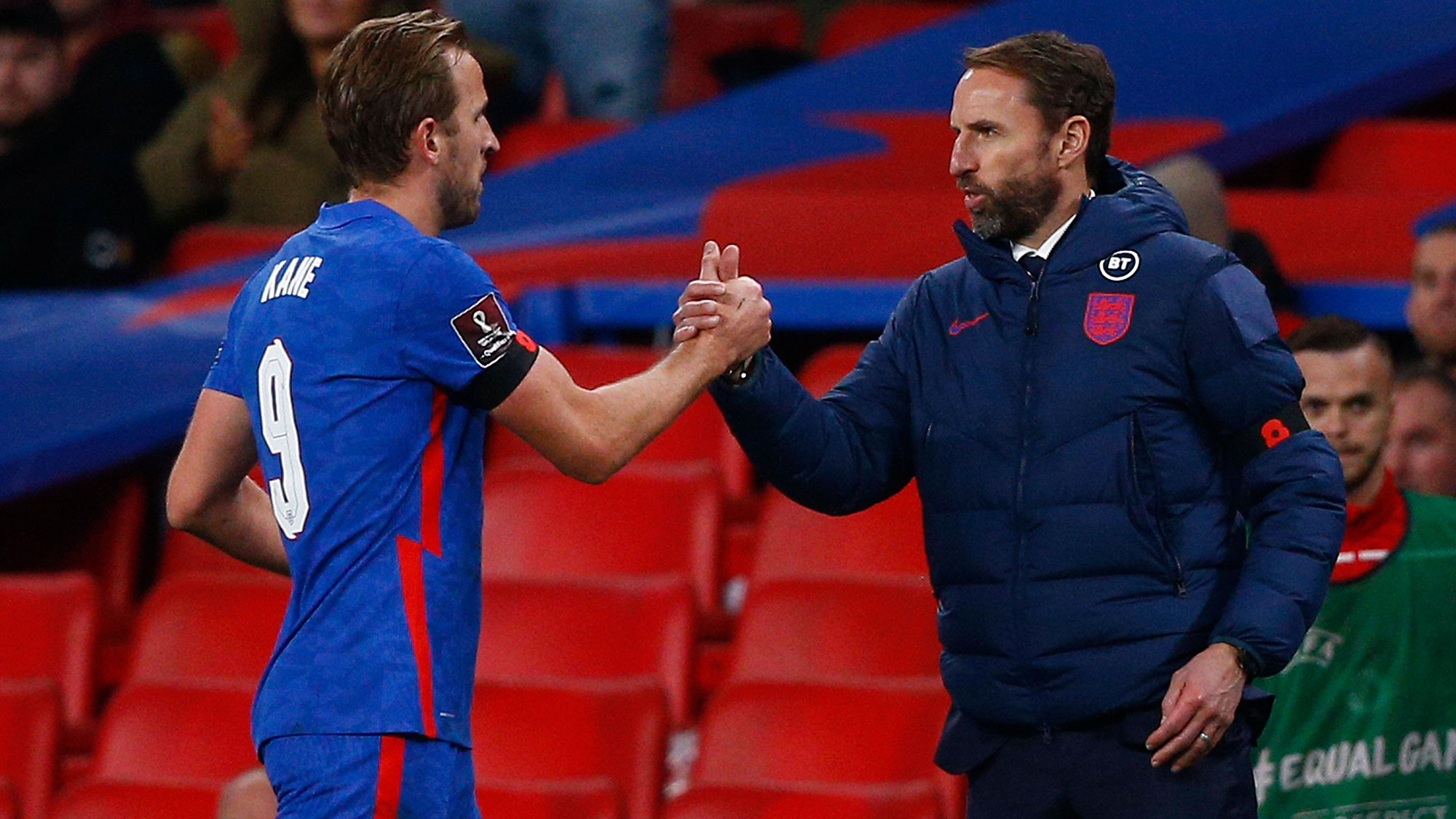England Has the World Cup to Prove It Hasn't Hit Its Ceiling

As box-ticking exercises go, England's World Cup qualifying finale was pretty emphatic. Gareth Southgate’s side needed a point from the away game against San Marino to secure progress to the World Cup, and it ended up winning 10-0, the first time it had ever reached double figures in a competitive game. San Marino is officially ranked the worst football side in the world, No. 210 out of 210, and it looked like it. Harry Kane scored four goals to move from tied for fourth alongside Jimmy Greaves on the England all-time goalscoring charts to tied for third. But did it matter?
The truth is that if your aim is to win major tournaments, games against the likes of San Marino, or Albania or even Hungary or Poland, don’t matter all that much. This is one of the difficulties of international football: Most games that are played have very little bearing on who will win the biggest prizes. When Manchester City plays in the FA Cup against, say, Cheltenham, goes behind but lurches to a 3-1 win with three late goals, as it did last season, nobody thinks too much about it. Cheltenham played well and frustrated City, but in the end quality told.
But if England did something similar against the equivalent of League Two opposition, there would be an outcry. Because there are fewer games, because the circus doesn’t just move onto the next fixture four days later, international football always draws far greater scrutiny. Yet whether City won that game 1-0 or 10-0 has very little bearing on its capacity to win the Champions League. It’s an entirely different sort of football.

Alf Ramsey, who led England to World Cup glory in 1966, understood that. Before the World Cup in 1966, England beat Norway 6-1 in a friendly that delighted fans and the press. Ramsey took far greater satisfaction in a drab 1-0 win over West Germany at the end of which England had been booed off. He knew that battering a minnow was largely irrelevant; far more significant was the ability to control midfield against a team of West Germany’s quality. For him, qualifiers and group games were to be gotten through; only knockouts really mattered.
That has, to be fair, largely been Gareth Southgate’s approach. And it has worked. Whatever grumbles there were during the group stage at the Euros, as England topped its table having scored just two goals, were largely forgotten as England got by Germany, Ukraine and Denmark to reach the final. Solidity against lesser teams (and Croatia, Scotland and the Czech Republic, all of whom have qualified for at least the World Cup qualifying playoffs this time around, weren’t that much lesser) may not be particularly exciting, but it is an essential basis for taking on better sides later in the competition. England has only ever won 14 knockout games in major tournaments, and Southgate is responsible for five of those, so his method clearly works.
Or it works up to a point. The defeat to Croatia in the World Cup semifinals and the penalty shootout defeat to Italy in the final of the Euros followed a similar pattern: England took the lead and ended up dropping deeper and deeper, coming under increasing pressure and responding only too late. There must be criticism of Southgate for that—an inability to ‘smell’ the game is perhaps his one consistent fault—but it also stems from a deep-rooted English anxiety when success comes within reach, one derived from 55 years without a trophy.

The qualifiers, frankly, are no judge at all of whether that issue has been resolved. So, has anything been learned? The temptation, particularly given how England conceded late on in Poland, is to say no, but that is perhaps unfair. The squad has been further honed, and Phil Foden has begun to influence games. Perhaps most significant has been the shift in these last two qualifiers, reverting to a back three. Southgate has shifted between a back three and four throughout his reign, but at the Euros a decision appeared to have been reached that he would use a four in games which England could be expected to dominate the ball, and a three in more competitive matches. To use a three against Albania and San Marino, with very attacking wingbacks, is a development on that.
Given England’s strength at fullback, that makes sense. It’s a way to get perhaps three fullbacks into the side—one as a flanking central defender and two at wingback—while also using two of the fleet of young creative players with the advantage of wingbacks to go outside them. With Jordan Henderson, Kalvin Phillips, Declan Rice and Jude Bellingham, there is also healthy depth at the heart of midfield, and the system also allows fairly straightforward shifts of emphasis by shifting personnel rather than shape.
All of that is encouraging. But frankly, none of it really means anything until Qatar.
More Soccer Coverage From Jonathan Wilson:
